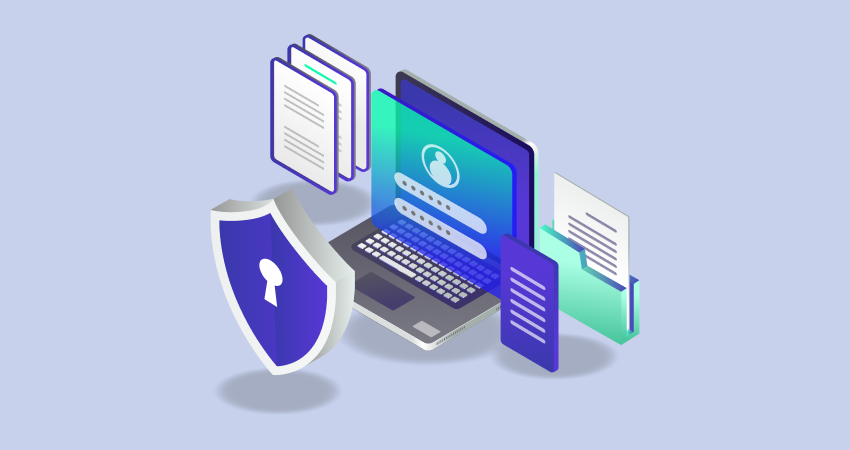Using Security as a Service to Embrace Mobility and Cloud Solutions
Due to the COVID-19 pandemic, over 58% of total US workers were forced to work remotely, often using personal devices connected to a poorly-secured network to access work resources. This creates a range of security concerns, from vulnerabilities to phishing attacks to large-scale data breaches. How to ensure security in this new era of mobility in work?
Author
Date
Category
All Categories
- AI-powered security
- Attacks & Threats
- Cybersecurity
- Hybrid Cloud
- Network
- Network Firewall
- Network Protection
- News
- Remote Workforce
- Security
- Zero Trust
Contents
Popular Posts
Product
Join the Newsletter

Due to the COVID-19 pandemic, over 58% of total US workers were forced to work remotely, often using personal devices connected to a poorly-secured network to access work resources. This creates a range of security concerns, from vulnerabilities to phishing attacks to large-scale data breaches. How to ensure security in this new era of mobility in work?
Healthcare, technology, and financial services industries feature the highest numbers of remote workers, with more remote work opportunities than ever before. While employees are slowly getting used to this formula of work, many of them don’t take the necessary precautions required to assure security from cyber threats.
Security as a Service is an emerging solution to this problem – how exactly can it help?
Working in The Times of Pandemic
According to the State of Remote Work Report for 2021 submitted by Owl Labs, an increasing number of employees are satisfied with working remotely. As much as 90% of employees reported they felt just as productive or even more than when they were working at a company office. What’s more, 84% of employees stated they want to continue working remotely even after the pandemic ends, even taking a pay cut if necessary.
With restrictions gradually becoming less and less evere all around the world, over 70% of remote workers have already returned to their offices for at least one day per week. While 78% of them feel more included at the office, which is only natural, surprisingly almost 60% say they still prefered working from home full-time.
Working remotely doesn’t mean slacking off for most of the day for most workers – in fact, 55% of them say they actually work more hours remotely than they did at a physical office. Adding that to the stress related to the pandemic, 63% of them also had to provide care for their children or an adult in their care. Workers have already adapted to this lifestyle and it would be extremely hard for them to go back to the office full-time – 1 in 3 employees says they would rather quit their job than stop working remotely.
A hybrid or remote approach seems to be what the majority wants – but how are companies supposed to deal with the security threats that remote work introduces?
How to Ensure Security for Remote Workers?
While working remotely is often more at risk of cyber threats than working at an office, cyber criminals are also growing more and more daring with each year, breaching the servers of some of the largest companies in the world in 2021, including Comcast, Facebook, LinkedIn, and Cognyte. Mobile devices are reportedly the hardest to secure, so how should companies protect their remote workers effectively?
Focus on user identity verification is currently a leading trend in the cybersecurity industry – and not without reasons. As users access corporate resources from remote locations, it’s extremely important for each access attempt to be properly authenticated beforehand. A classic approach to this has been using a secure VPN to access the corporate network – however, simple VPNs feature many security flaws and vulnerabilities which could lead to breaches and leaks.
There is, however, another solution. One that is highly scalable, doesn’t require a huge investment, and can be implemented on any device instantly – the Security as a Service model.
Network Security Over The Cloud – How Does It Work?
While cloud computing solutions are becoming more and more popular, cloud security is still an evolving market experiencing constant changes. There is, however, a noticeable shift towards networking as a service – with SD-WAN gaining popularity, Networking as a Service (or NaaS) solutions are on the rise, delivering networks through an advanced cloud infrastructure.
On its own, however, NaaS also presented many security concerns despite its evident efficiency. Networking as a Service required similar solutions that guaranteed security – and that’s exactly how the concept of Security as a Service, or SECaaS, came to be.
The perfect combination of NaaS and SECaaS, according to Gartner, is SASE – or Secure Access Service Edge. SASE is an innovative cloud-based technology that combines network distribution and complex security functions. SASE can be configured to cater to desktop and mobile users, as well as data centers, IoT devices, and many other machines.
SASE is above all else secure – but it is also highly affordable. Implementing SASE doesn’t require any additional hardware or software licenses, and its maintenance and updates are fully operated by the vendor with no downtime to users. SASE is fundamentally based on user and device identity, granting zero access to any connection that’s unauthorized under strict corporate policy. SASE’s WAN architecture is highly scalable, and new devices can easily be connected in a matter of minutes. It’s also incredibly easy to manage, with a unified control panel that grants access to policy control, diagnostics, monitoring, reporting, and logging functionalities.
FAQ
With remote workers accessing company resources from all over the world, VPNs might not be a sufficient security strategy anymore. They are open to many web-based network attacks and should be considered only a part of corporate security policy.
Of course! Over 70% of all network attacks are targeted towards organizations with less than 100 employees. While they might not be as lucrative a target as large corporations, their security measures are usually much weaker. Modern small businesses need to secure their networks just as well as the big players do – and that’s exactly what SASE provides at a low cost!
Since SASE requires no hardware or existing infrastructure, it can be implemented almost immediately at a low cost. With SASE, you pay only for the service you get, while most on-premises networking and security solutions not only require a heavy investment, but also generate additional costs and inefficiencies with downtime. In case of SASE, maintenance doesn’t require downtime and all the updates are implemented on-the-fly, giving you constant access to high-quality service with no pauses
Get Started with Timus
Zero Trust. Adaptive Cloud Firewall. Secure Remote Access. In one.
